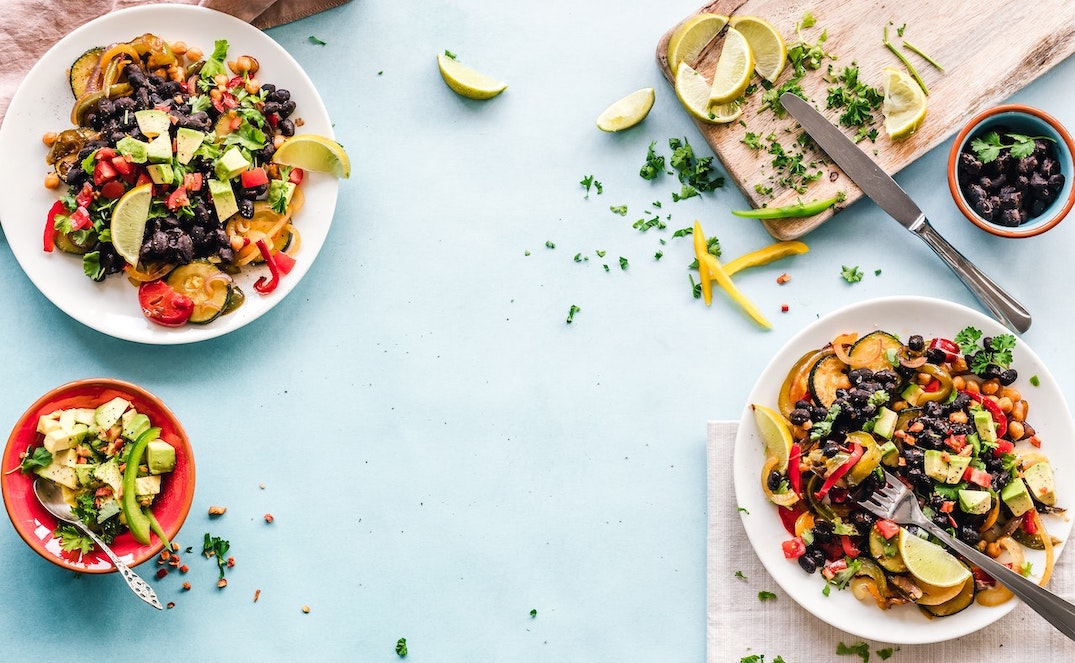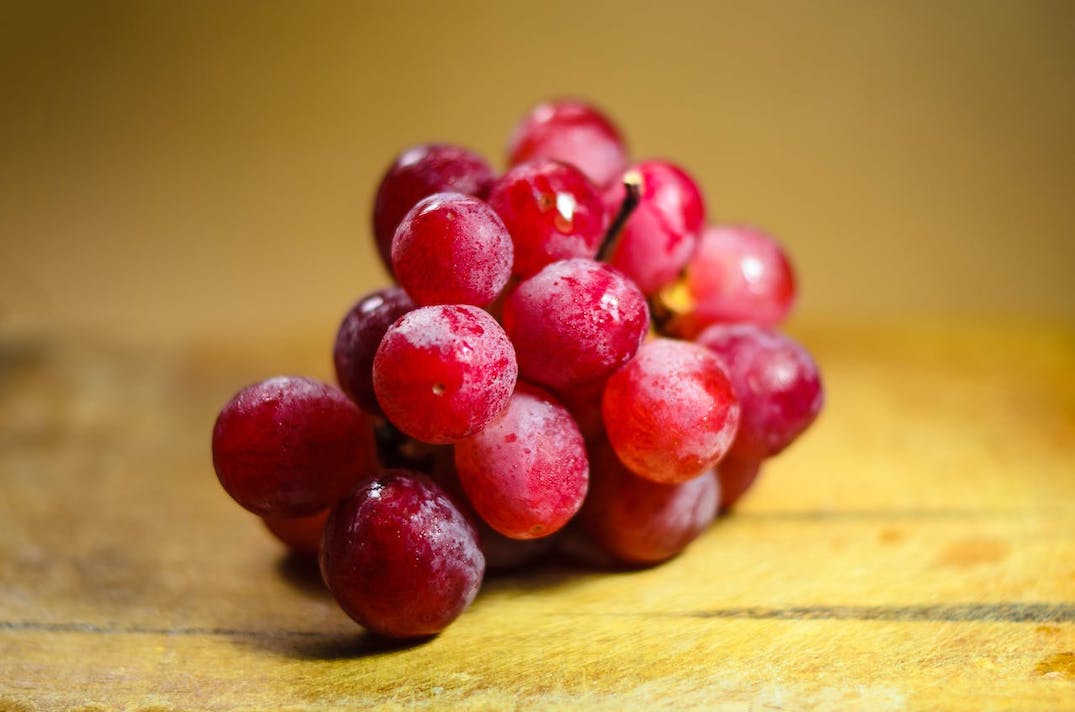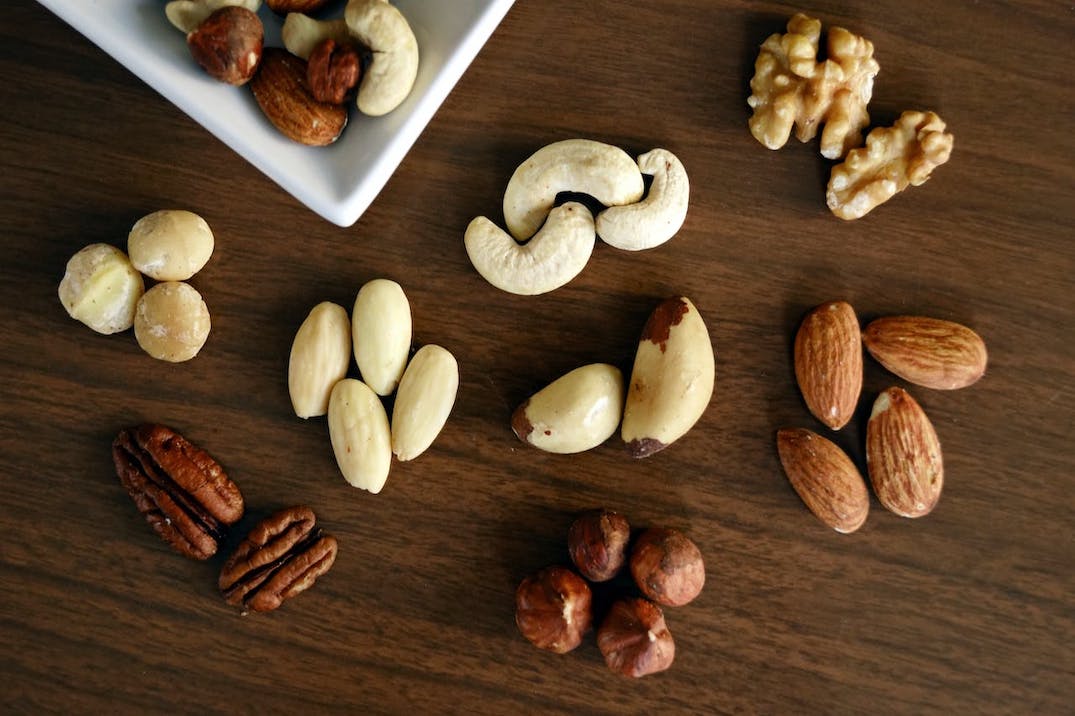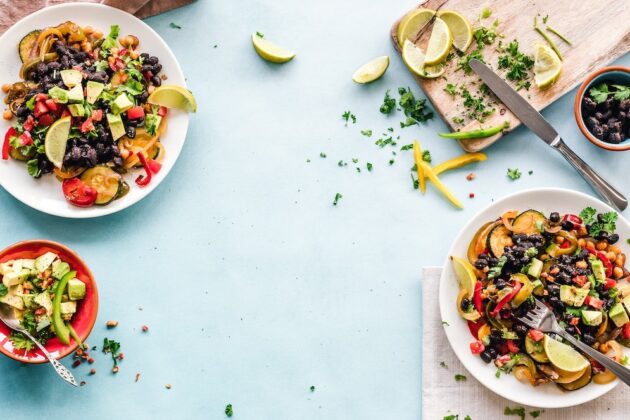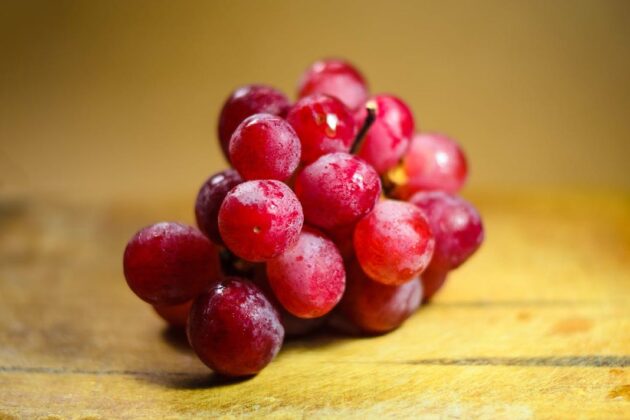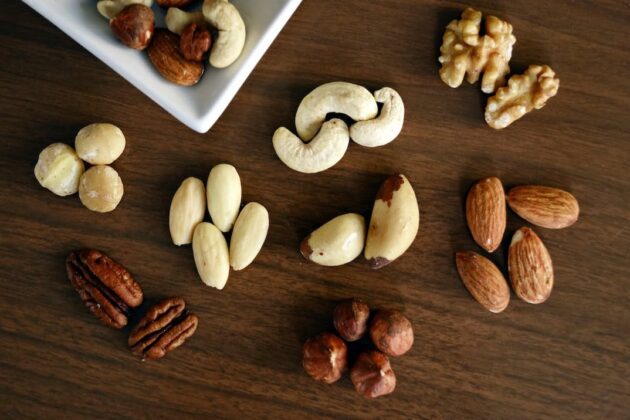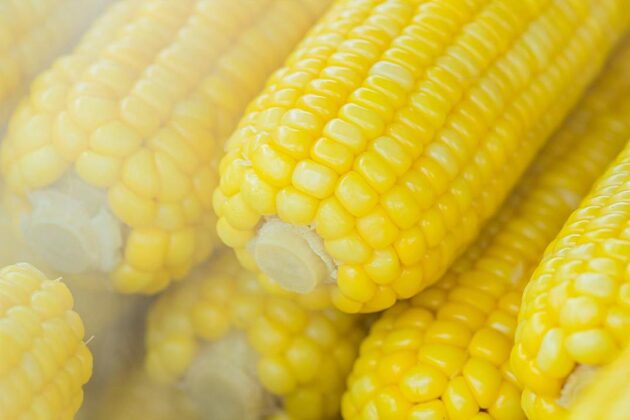How to Meal Prep for Weight Loss
If you’ve been trying to lose weight, chances are you’ve heard of, or maybe even tried, meal prepping. Preparing a set of healthy, balanced meals at the start of the week can keep you on track and help you meet your weight loss goals faster.
Meal prepping can assist with common dietary challenges that often lead to weight gain, including portion control and food quality. Prepping foods ahead of time can also save you valuable time in the kitchen and even save you money.
It’s not a requirement to meal prep for weight loss, but it can be a very helpful tool that takes the guesswork out of eating healthy. Simply choose a few easy, balanced recipes, make your shopping list, choose a day to do your shopping and prepping, and make it a weekly routine.
This guide goes over how to meal prep for weight loss including important steps to take, how much you should be eating, foods to eat and avoid, and more.
How to meal prep for weight loss
If you are ready to try your hand at meal prepping for weight loss, you may be wondering where to start. Below are some tips for steps to take to establish a healthy meal prep routine so you can start enjoying the benefits.
1) Establish your weight loss goals
You likely have an idea of where you would like to see yourself, but you also need to have an idea of what you need to do to get there.
For many, this starts with establishing a proper calorie range to ensure you are obtaining an adequate deficit for weight loss while still supporting sustainable dietary changes. Losing weight isn’t just about eating less, it’s about balance.
You can get an idea of your calorie needs by using a TDEE calculator which takes into account a variety of factors including your age, gender, height, weight, and activity levels. Based on this information, it will generate a calorie range that you need to maintain your current weight.
From there you will establish an ideal range that creates a calorie deficit for weight loss. To ensure a healthy and sustainable weight loss, avoid calorie deficits that reduce your calories by more than 500 calories per day.
This means if your TDEE is 2,100 calories per day, you should be eating no less than 1,600 per day for weight loss. Having an idea of your recommended calorie range for weight loss can help you determine your meals and portions during prepping.
2) Consider other health goals
Weight loss may be your main goal, but you might have other goals that you want to consider as well. For example, maybe you also want to choose a high-protein diet, reduce your carbohydrate intake, or simply increase your daily intake of iron-rich foods or veggies.
Establish any other health goals you have that may be pertinent to your meal prepping. This can help you narrow down different meal ideas that better suit your specific goals.
3) Choose a few meals that fit your goals
Now is the fun part—choose your recipes for meal prep meals. This step can sometimes feel overwhelming, but it’s actually a lot easier than you think to come up with easy, healthy, balanced meals to enjoy.
There are numerous resources for recipes available online through websites like Pinterest, Allrecipes, and even TikTok. You can also ask friends or family members or search your local bookstore or library for recipe books that suit your preferences.
If you’re still struggling, below are some examples of some of my favorite weight-loss-friendly recipes that check off all the boxes:
- Breakfast meal prep ideas for weight loss
- Low-sugar Greek yogurt parfait with granola and berries
- Cottage cheese with fruit and nuts
- Lunch meal prep ideas for weight loss
- Mediterranean quinoa salad with grilled chicken
- Hummus and veggie wrap with marinated tofu
- Dinner meal prep ideas for weight loss
- Chicken burrito bowls
- Turkey chili with veggies

Reach your weight loss goals faster with support from a Registered Dietitian
90% of Zaya Care patients pay $0 for dietitian visits
4) Create a shopping list
Now that you know what you want to make for the week, it’s time to assemble your shopping list. This is where it’s important to stay on task. It’s also a great opportunity to save some extra money.
First, create a list of all the ingredients you will need from the recipes you plan to make. This will vary depending on if you want to meal prep only one meal a day or all three.
Next, take stock of what ingredients you have in your refrigerator, freezer, and pantry to eliminate purchasing unnecessary items and reduce food waste. Remove any items you don’t need from that original list of ingredients.
What’s left is your list for the store. It can be helpful to categorize ingredients to make shopping less of a task. For example, group all your produce together so when you get to the produce section, you know exactly what you need and don’t have to go down the whole list every time.
Most grocery stores offer weekly ads that include sales on various food items. You can use this ad to help with your weekly planning to save additional money on your grocery bill.
5) Go shopping!
Now that you’re armed and ready with your list, categorized and all, it’s time to hit the store. While it seems self-explanatory, I’ll just remind you to try your best to stick to your list.
Avoid impulse purchases that may lead you to over-indulging on snacks or opting for convenience items instead of sticking to your meal prep plan. Be sure to also include any other essential items on your grocery list to avoid perusing through the store.
Make sure this list includes the occasional indulgence, so you don’t feel deprived but be mindful of your choices and limit extended time browsing unnecessary items.
If this is particularly challenging for you, consider ordering your groceries online or picking them up curbside (if offered) to avoid the temptations that exist in the store.
6) Block out some time for meal prepping
You’ve got your recipes and your ingredients, now it’s time to get prepping. To stick with a consistent routine, find a day and time each week that you can dedicate to this task. This will help you develop a consistent habit of prepping and avoid pushing it off until later.
For many, this is right before the start of the new week. However, meal prep can be done any day that works best for your schedule and aligns with when you normally do your grocery shopping to avoid food spoilage.
7) Cook your meals!
Once you’ve got your chosen date and time for prepping, all that’s left to do is get cooking. Look at your recipes and begin preparing as directed. If you are new to meal prepping, there will be some trial and error here.
Some recipes may need to be adjusted to make enough for your meal prep. As you get more comfortable with prepping, you will learn to adjust recipes to meet your needs and how to prep different ingredients for storage, so they stay fresh.
8) Store properly
It’s important to ensure you are storing your meal prep meals properly, so they maintain their freshness. It’s also important to consider texture when you prep your meals as some foods might need to be assembled right before eating to avoid getting soggy.
For example, items such as salads should be stored with the dressings in a separate container to avoid getting soggy. The same goes for yogurt parfaits, putting the granola in a separate container. This is true for most foods that contain a sauce.
There are a variety of different types of meal prep containers available to help with things like portion size and easy storage, particularly for those on the go. Look through your different meal prep container options to see what may be most suitable for your needs.
If choosing a plastic container, look for one that is BPA-free. Keep in mind plastic tends to hold odor, so glass containers may be a better option for some foods.
However, glass containers aren’t as ideal for those taking a lunch on the go. Glass also becomes hot in the microwave which can make the container too hot to touch.
You’ll want to consider these kinds of things before purchasing any new meal prep containers. However, any container can work as long as it has a lid to keep the food fresh and is conducive to being heated as needed for the recipe.
9) Take note of how long the meals are good for
How many meals you can get out of your meal prep recipes will vary based on the ingredients in them. Some foods will keep for longer than others, and it’s important to know how long your meal-prepped foods will be safe to eat.
Keep this in mind when choosing your recipes for the week, especially if you are looking for meals that you can enjoy for three consecutive days or more. Some meals may also be able to be frozen to enjoy at a later date which can help you add variety to your meal prep.
10) Reheat (if needed) & enjoy
Now it’s time to enjoy your hard work. Your meals are prepped and ready to go, so you don’t have to think about them for the week. Simply grab your meal when the time comes, reheat (if needed), and enjoy!
Deciding on your calorie and macronutrient targets
When embarking on a weight loss journey, many find it helpful to have established goals for calories and macronutrients. While this is not a requirement for weight loss, it can help you stay on track, especially at the beginning of your journey.
Counting calories and macros can be tedious, but it’s not something you have to continue long-term. Once you’re aware of your intake, making good food choices will be easier without counting and tracking.
Many online apps offer recommendations for calories and macros however, it’s important to ensure you are getting your information from credible sources.
If looking for accurate calorie ranges, look for a TDEE calculator such as this one to help you determine your specific daily energy expenditure. From there, you can subtract 300-500 calories to create a comfortable calorie deficit for weight loss.
Avoid going beyond 500 calories as this can become difficult to sustain and may hinder your weight loss progress in the long run.
The Dietary Guidelines for Americans recommended ranges for macronutrients include 45-65% of calories from carbohydrates, 10-35% of calories from protein, and 20-35% of calories from fat.
Finding a dietitian to work with is a great way to get guidance on calories and macronutrient ranges. Dietitians can help you lose weight by providing information, education, and ongoing support.

Reach your weight loss goals faster with support from a Registered Dietitian
90% of Zaya Care patients pay $0 for dietitian visits
Tips for weight loss meal prepping
Meal prepping includes a lot of trial and error, with many things learned along the way. To help you be more successful, below are some tips for meal prepping for weight loss:
- Measure everything. Weight loss progress can be easily halted when we aren’t aware of everything we are taking in. Be sure to read food labels for serving size and measure or weigh your portions to avoid accidentally taking in additional calories.
- Track your food intake with MyFitnessPal or another app. Consider tracking your intake for the first few weeks or months, so you become more aware of how many calories you’re consuming. Apps like MyFitnessPal or LoseIt can make tracking easy.
- Stay hydrated. Our body sometimes mixes up thirst for hunger, so not maintaining adequate hydration can make you more prone to snacking. Aim to consume at least 80 ounces of water per day and adjust as needed based on your activity level and climate.
- Don’t buy foods that aren’t on your list. Only purchase planned items on your grocery list to avoid impulse purchases of indulgence items. Keeping these foods limited can help you avoid temptation.
- Include fiber, healthy fats, and lean protein in every meal. Fiber, healthy fats, and protein are key foods for satiety. Including these foods in every meal and snack can increase satisfaction and decrease total caloric intake throughout the day.
- Avoid processed foods. Processed snack items and frozen meals are often low in fiber and protein and high in sugar, fats, and sodium. Not only are these foods detrimental to your weight loss efforts, but they are also not as satisfying and can increase your health risk for various conditions.
- Switch up meals to keep things interesting. While it can be easy to just eat the same foods over and over, especially if you know they fit your goals, incorporating variety can help ensure you don’t get bored and fall off track.
- Look for healthy alternatives. Sometimes a simple swap can make a huge difference. For example, swap soda for seltzer water or regular peanut butter for a natural option to cut down on added sugars.
- Use containers with dividers. Choosing meal prep containers that have portioned dividers can help you portion your meals without having to get out the measuring cups.
- Don’t forget about prepping snacks. Snacks are absolutely okay during weight loss however, it’s important to be mindful of your snack options just like your meals. Consider prepping different snacks to keep you on track and satisfied between meals.
Sample weight loss meal prep shopping list | Best foods to eat
If you are new to prepping and shopping for healthy meals, this sample weight loss meal prep shopping list can give you an idea of some beneficial foods to include in your plans:
- Fruits – Bananas, apples, strawberries, pineapples, blueberries
- Vegetables – Broccoli, spinach, bell peppers, carrots, zucchini, kale, cauliflower
- Lean proteins – Chicken breast, turkey breast, salmon, tilapia, tuna, tofu, Greek yogurt, eggs, cottage cheese
- Whole grains – Brown rice, quinoa, whole grain pasta, oats, whole grain bread
- Healthy fats – Avocado, almonds, walnuts, olive oil, chia seeds, flaxseeds
- Dairy or alternatives – Low-fat milk, almond milk, low-fat cheese, cottage cheese, low-sugar fat-free Greek yogurt
- Legumes and beans – Chickpeas, lentils, black beans, kidney beans
- Herbs and spices – Garlic, basil, cumin, paprika, turmeric
- Miscellaneous – Almond butter, peanut butter, hummus, guacamole, balsamic vinegar, low-sodium soy sauce
Foods to avoid when trying to lose weight
When you are trying to lose weight, there are some foods you’ll want to limit or avoid purchasing. Below is a list of food items that can negatively impact your weight loss progress:
- Processed snacks – Chips, cookies, candy bars, processed pastries and baked goods
- Sugary beverages – Soda, sweetened juices, energy drinks, high-sugar coffee drinks
- Refined grains – White bread, white pasta, white rice, pastries/baked goods
- High-fat meats – Bacon, sausage, fatty cuts of beef, processed deli meats
- Fried foods – French fries, fried chicken, onion rings, doughnuts
- High-calorie condiments – Mayonnaise, creamy salad dressings, high-sugar condiments such as ketchup and barbeque sauce
- Full-fat dairy – Full-fat milk, cheese, ice cream, heavy cream
- Alcohol – Beer, sweet cocktails, heavy liquors
- Fast food – Burgers, pizza, fast food breakfast items, fried fast food sides (French fries, onion rings, fritters)
Why you should consider working with a dietitian to lose weight
Meal prepping is a great tool for weight loss but works best when you know your weight loss goals, dietary needs, correct portion sizes, and best foods for your body.
Getting personal and professional advice from a nutritionist or dietitian is almost always worth it as it can bring clarity to your nutrition needs and the best weight loss strategy for you.
Also, if you are not seeing results from your efforts with meal prepping, a dietitian can help you evaluate your routine and make necessary changes. They can also provide ongoing accountability and support for your efforts.
Say you want to create a meal plan to help with weight loss for your wedding. Your dietitian will help you set a goal weight, determine how much you should be eating, and help you choose the best foods for it.
When you request an appointment with one of our Registered Dietitians here at Zaya Care, we’ll check your insurance so you know exactly how much you’ll have to pay, if anything at all.
It’s worth noting that 90% of Zaya Care patients pay $0 for nutrition care with a registered dietitian as we are in-network with many major carriers.
FAQs about meal prepping for weight loss
Can I lose weight just by meal prepping?
Meal prepping can help aid in weight loss as it encourages eating more home-cooked meals and practicing portion control. However, it must be done properly. If meal quality and portion size are not considered, then meal prepping may not result in weight loss.
How long does meal prepping take?
How long it takes to plan and prep meals for the week varies. It probably will take longer for those who are new to it, but it also depends on which meals you plan to make. For example, you might prepare healthy sandwiches that only take 10 minutes to make, or you might make a hearty vegetable stew that takes a few hours to cook.
How many days can I meal prep for?
Meal prepping isn’t limited to a number of days. In fact, some people prepare freezer meals months in advance. The number of meals you choose to make and how long they last will depend on your meal choices, budget, storage options, and available time.
How long can I keep prepped meals in the fridge?
The length of time meal prepped meals can last in the fridge will vary depending on the foods included. Some foods perish faster than others and may require freezing if you don’t plan to consume them until the end of the week.
Can I freeze prepped meals?
Meal prepped meals can last longer if they are frozen however, not all meals freeze well. Some soups (without noodles), casseroles, and chilis will freeze very well however, salads, pasta dishes, and some wraps will not.
Are meal delivery services like Hello Fresh & Factor good for weight loss?
HelloFresh and Factor meals can be good options for those who don’t know how or don’t like to cook. Many of these meal delivery services have healthier options available, however, they are likely a lot pricier than if you make your own meals.
Can I eat pasta while trying to lose weight?
No foods are completely off limits while trying to lose weight as this type of restriction can make weight loss difficult to maintain. Pasta is not an unhealthy food but does contain a high amount of carbohydrates. Practice portion control with pasta and add a protein so it is more filling.

Reach your weight loss goals faster with support from a Registered Dietitian
90% of Zaya Care patients pay $0 for dietitian visits
If you’ve been trying to lose weight, chances are you’ve heard of, or maybe even tried, meal prepping. Preparing a set of healthy, balanced meals at the start of the week can keep you on track and help you meet your weight loss goals faster.
Meal prepping can assist with common dietary challenges that often lead to weight gain, including portion control and food quality. Prepping foods ahead of time can also save you valuable time in the kitchen and even save you money.
It’s not a requirement to meal prep for weight loss, but it can be a very helpful tool that takes the guesswork out of eating healthy. Simply choose a few easy, balanced recipes, make your shopping list, choose a day to do your shopping and prepping, and make it a weekly routine.
This guide goes over how to meal prep for weight loss including important steps to take, how much you should be eating, foods to eat and avoid, and more.
How to meal prep for weight loss
If you are ready to try your hand at meal prepping for weight loss, you may be wondering where to start. Below are some tips for steps to take to establish a healthy meal prep routine so you can start enjoying the benefits.
1) Establish your weight loss goals
You likely have an idea of where you would like to see yourself, but you also need to have an idea of what you need to do to get there.
For many, this starts with establishing a proper calorie range to ensure you are obtaining an adequate deficit for weight loss while still supporting sustainable dietary changes. Losing weight isn’t just about eating less, it’s about balance.
You can get an idea of your calorie needs by using a TDEE calculator which takes into account a variety of factors including your age, gender, height, weight, and activity levels. Based on this information, it will generate a calorie range that you need to maintain your current weight.
From there you will establish an ideal range that creates a calorie deficit for weight loss. To ensure a healthy and sustainable weight loss, avoid calorie deficits that reduce your calories by more than 500 calories per day.
This means if your TDEE is 2,100 calories per day, you should be eating no less than 1,600 per day for weight loss. Having an idea of your recommended calorie range for weight loss can help you determine your meals and portions during prepping.
2) Consider other health goals
Weight loss may be your main goal, but you might have other goals that you want to consider as well. For example, maybe you also want to choose a high-protein diet, reduce your carbohydrate intake, or simply increase your daily intake of iron-rich foods or veggies.
Establish any other health goals you have that may be pertinent to your meal prepping. This can help you narrow down different meal ideas that better suit your specific goals.
3) Choose a few meals that fit your goals
Now is the fun part—choose your recipes for meal prep meals. This step can sometimes feel overwhelming, but it’s actually a lot easier than you think to come up with easy, healthy, balanced meals to enjoy.
There are numerous resources for recipes available online through websites like Pinterest, Allrecipes, and even TikTok. You can also ask friends or family members or search your local bookstore or library for recipe books that suit your preferences.
If you’re still struggling, below are some examples of some of my favorite weight-loss-friendly recipes that check off all the boxes:
- Breakfast meal prep ideas for weight loss
- Low-sugar Greek yogurt parfait with granola and berries
- Cottage cheese with fruit and nuts
- Lunch meal prep ideas for weight loss
- Mediterranean quinoa salad with grilled chicken
- Hummus and veggie wrap with marinated tofu
- Dinner meal prep ideas for weight loss
- Chicken burrito bowls
- Turkey chili with veggies

Reach your weight loss goals faster with support from a Registered Dietitian
90% of Zaya Care patients pay $0 for dietitian visits
4) Create a shopping list
Now that you know what you want to make for the week, it’s time to assemble your shopping list. This is where it’s important to stay on task. It’s also a great opportunity to save some extra money.
First, create a list of all the ingredients you will need from the recipes you plan to make. This will vary depending on if you want to meal prep only one meal a day or all three.
Next, take stock of what ingredients you have in your refrigerator, freezer, and pantry to eliminate purchasing unnecessary items and reduce food waste. Remove any items you don’t need from that original list of ingredients.
What’s left is your list for the store. It can be helpful to categorize ingredients to make shopping less of a task. For example, group all your produce together so when you get to the produce section, you know exactly what you need and don’t have to go down the whole list every time.
Most grocery stores offer weekly ads that include sales on various food items. You can use this ad to help with your weekly planning to save additional money on your grocery bill.
5) Go shopping!
Now that you’re armed and ready with your list, categorized and all, it’s time to hit the store. While it seems self-explanatory, I’ll just remind you to try your best to stick to your list.
Avoid impulse purchases that may lead you to over-indulging on snacks or opting for convenience items instead of sticking to your meal prep plan. Be sure to also include any other essential items on your grocery list to avoid perusing through the store.
Make sure this list includes the occasional indulgence, so you don’t feel deprived but be mindful of your choices and limit extended time browsing unnecessary items.
If this is particularly challenging for you, consider ordering your groceries online or picking them up curbside (if offered) to avoid the temptations that exist in the store.
6) Block out some time for meal prepping
You’ve got your recipes and your ingredients, now it’s time to get prepping. To stick with a consistent routine, find a day and time each week that you can dedicate to this task. This will help you develop a consistent habit of prepping and avoid pushing it off until later.
For many, this is right before the start of the new week. However, meal prep can be done any day that works best for your schedule and aligns with when you normally do your grocery shopping to avoid food spoilage.
7) Cook your meals!
Once you’ve got your chosen date and time for prepping, all that’s left to do is get cooking. Look at your recipes and begin preparing as directed. If you are new to meal prepping, there will be some trial and error here.
Some recipes may need to be adjusted to make enough for your meal prep. As you get more comfortable with prepping, you will learn to adjust recipes to meet your needs and how to prep different ingredients for storage, so they stay fresh.
8) Store properly
It’s important to ensure you are storing your meal prep meals properly, so they maintain their freshness. It’s also important to consider texture when you prep your meals as some foods might need to be assembled right before eating to avoid getting soggy.
For example, items such as salads should be stored with the dressings in a separate container to avoid getting soggy. The same goes for yogurt parfaits, putting the granola in a separate container. This is true for most foods that contain a sauce.
There are a variety of different types of meal prep containers available to help with things like portion size and easy storage, particularly for those on the go. Look through your different meal prep container options to see what may be most suitable for your needs.
If choosing a plastic container, look for one that is BPA-free. Keep in mind plastic tends to hold odor, so glass containers may be a better option for some foods.
However, glass containers aren’t as ideal for those taking a lunch on the go. Glass also becomes hot in the microwave which can make the container too hot to touch.
You’ll want to consider these kinds of things before purchasing any new meal prep containers. However, any container can work as long as it has a lid to keep the food fresh and is conducive to being heated as needed for the recipe.
9) Take note of how long the meals are good for
How many meals you can get out of your meal prep recipes will vary based on the ingredients in them. Some foods will keep for longer than others, and it’s important to know how long your meal-prepped foods will be safe to eat.
Keep this in mind when choosing your recipes for the week, especially if you are looking for meals that you can enjoy for three consecutive days or more. Some meals may also be able to be frozen to enjoy at a later date which can help you add variety to your meal prep.
10) Reheat (if needed) & enjoy
Now it’s time to enjoy your hard work. Your meals are prepped and ready to go, so you don’t have to think about them for the week. Simply grab your meal when the time comes, reheat (if needed), and enjoy!
Deciding on your calorie and macronutrient targets
When embarking on a weight loss journey, many find it helpful to have established goals for calories and macronutrients. While this is not a requirement for weight loss, it can help you stay on track, especially at the beginning of your journey.
Counting calories and macros can be tedious, but it’s not something you have to continue long-term. Once you’re aware of your intake, making good food choices will be easier without counting and tracking.
Many online apps offer recommendations for calories and macros however, it’s important to ensure you are getting your information from credible sources.
If looking for accurate calorie ranges, look for a TDEE calculator such as this one to help you determine your specific daily energy expenditure. From there, you can subtract 300-500 calories to create a comfortable calorie deficit for weight loss.
Avoid going beyond 500 calories as this can become difficult to sustain and may hinder your weight loss progress in the long run.
The Dietary Guidelines for Americans recommended ranges for macronutrients include 45-65% of calories from carbohydrates, 10-35% of calories from protein, and 20-35% of calories from fat.
Finding a dietitian to work with is a great way to get guidance on calories and macronutrient ranges. Dietitians can help you lose weight by providing information, education, and ongoing support.

Reach your weight loss goals faster with support from a Registered Dietitian
90% of Zaya Care patients pay $0 for dietitian visits
Tips for weight loss meal prepping
Meal prepping includes a lot of trial and error, with many things learned along the way. To help you be more successful, below are some tips for meal prepping for weight loss:
- Measure everything. Weight loss progress can be easily halted when we aren’t aware of everything we are taking in. Be sure to read food labels for serving size and measure or weigh your portions to avoid accidentally taking in additional calories.
- Track your food intake with MyFitnessPal or another app. Consider tracking your intake for the first few weeks or months, so you become more aware of how many calories you’re consuming. Apps like MyFitnessPal or LoseIt can make tracking easy.
- Stay hydrated. Our body sometimes mixes up thirst for hunger, so not maintaining adequate hydration can make you more prone to snacking. Aim to consume at least 80 ounces of water per day and adjust as needed based on your activity level and climate.
- Don’t buy foods that aren’t on your list. Only purchase planned items on your grocery list to avoid impulse purchases of indulgence items. Keeping these foods limited can help you avoid temptation.
- Include fiber, healthy fats, and lean protein in every meal. Fiber, healthy fats, and protein are key foods for satiety. Including these foods in every meal and snack can increase satisfaction and decrease total caloric intake throughout the day.
- Avoid processed foods. Processed snack items and frozen meals are often low in fiber and protein and high in sugar, fats, and sodium. Not only are these foods detrimental to your weight loss efforts, but they are also not as satisfying and can increase your health risk for various conditions.
- Switch up meals to keep things interesting. While it can be easy to just eat the same foods over and over, especially if you know they fit your goals, incorporating variety can help ensure you don’t get bored and fall off track.
- Look for healthy alternatives. Sometimes a simple swap can make a huge difference. For example, swap soda for seltzer water or regular peanut butter for a natural option to cut down on added sugars.
- Use containers with dividers. Choosing meal prep containers that have portioned dividers can help you portion your meals without having to get out the measuring cups.
- Don’t forget about prepping snacks. Snacks are absolutely okay during weight loss however, it’s important to be mindful of your snack options just like your meals. Consider prepping different snacks to keep you on track and satisfied between meals.
Sample weight loss meal prep shopping list | Best foods to eat
If you are new to prepping and shopping for healthy meals, this sample weight loss meal prep shopping list can give you an idea of some beneficial foods to include in your plans:
- Fruits – Bananas, apples, strawberries, pineapples, blueberries
- Vegetables – Broccoli, spinach, bell peppers, carrots, zucchini, kale, cauliflower
- Lean proteins – Chicken breast, turkey breast, salmon, tilapia, tuna, tofu, Greek yogurt, eggs, cottage cheese
- Whole grains – Brown rice, quinoa, whole grain pasta, oats, whole grain bread
- Healthy fats – Avocado, almonds, walnuts, olive oil, chia seeds, flaxseeds
- Dairy or alternatives – Low-fat milk, almond milk, low-fat cheese, cottage cheese, low-sugar fat-free Greek yogurt
- Legumes and beans – Chickpeas, lentils, black beans, kidney beans
- Herbs and spices – Garlic, basil, cumin, paprika, turmeric
- Miscellaneous – Almond butter, peanut butter, hummus, guacamole, balsamic vinegar, low-sodium soy sauce
Foods to avoid when trying to lose weight
When you are trying to lose weight, there are some foods you’ll want to limit or avoid purchasing. Below is a list of food items that can negatively impact your weight loss progress:
- Processed snacks – Chips, cookies, candy bars, processed pastries and baked goods
- Sugary beverages – Soda, sweetened juices, energy drinks, high-sugar coffee drinks
- Refined grains – White bread, white pasta, white rice, pastries/baked goods
- High-fat meats – Bacon, sausage, fatty cuts of beef, processed deli meats
- Fried foods – French fries, fried chicken, onion rings, doughnuts
- High-calorie condiments – Mayonnaise, creamy salad dressings, high-sugar condiments such as ketchup and barbeque sauce
- Full-fat dairy – Full-fat milk, cheese, ice cream, heavy cream
- Alcohol – Beer, sweet cocktails, heavy liquors
- Fast food – Burgers, pizza, fast food breakfast items, fried fast food sides (French fries, onion rings, fritters)
Why you should consider working with a dietitian to lose weight
Meal prepping is a great tool for weight loss but works best when you know your weight loss goals, dietary needs, correct portion sizes, and best foods for your body.
Getting personal and professional advice from a nutritionist or dietitian is almost always worth it as it can bring clarity to your nutrition needs and the best weight loss strategy for you.
Also, if you are not seeing results from your efforts with meal prepping, a dietitian can help you evaluate your routine and make necessary changes. They can also provide ongoing accountability and support for your efforts.
Say you want to create a meal plan to help with weight loss for your wedding. Your dietitian will help you set a goal weight, determine how much you should be eating, and help you choose the best foods for it.
When you request an appointment with one of our Registered Dietitians here at Zaya Care, we’ll check your insurance so you know exactly how much you’ll have to pay, if anything at all.
It’s worth noting that 90% of Zaya Care patients pay $0 for nutrition care with a registered dietitian as we are in-network with many major carriers.
FAQs about meal prepping for weight loss
Can I lose weight just by meal prepping?
Meal prepping can help aid in weight loss as it encourages eating more home-cooked meals and practicing portion control. However, it must be done properly. If meal quality and portion size are not considered, then meal prepping may not result in weight loss.
How long does meal prepping take?
How long it takes to plan and prep meals for the week varies. It probably will take longer for those who are new to it, but it also depends on which meals you plan to make. For example, you might prepare healthy sandwiches that only take 10 minutes to make, or you might make a hearty vegetable stew that takes a few hours to cook.
How many days can I meal prep for?
Meal prepping isn’t limited to a number of days. In fact, some people prepare freezer meals months in advance. The number of meals you choose to make and how long they last will depend on your meal choices, budget, storage options, and available time.
How long can I keep prepped meals in the fridge?
The length of time meal prepped meals can last in the fridge will vary depending on the foods included. Some foods perish faster than others and may require freezing if you don’t plan to consume them until the end of the week.
Can I freeze prepped meals?
Meal prepped meals can last longer if they are frozen however, not all meals freeze well. Some soups (without noodles), casseroles, and chilis will freeze very well however, salads, pasta dishes, and some wraps will not.
Are meal delivery services like Hello Fresh & Factor good for weight loss?
HelloFresh and Factor meals can be good options for those who don’t know how or don’t like to cook. Many of these meal delivery services have healthier options available, however, they are likely a lot pricier than if you make your own meals.
Can I eat pasta while trying to lose weight?
No foods are completely off limits while trying to lose weight as this type of restriction can make weight loss difficult to maintain. Pasta is not an unhealthy food but does contain a high amount of carbohydrates. Practice portion control with pasta and add a protein so it is more filling.

Reach your weight loss goals faster with support from a Registered Dietitian
90% of Zaya Care patients pay $0 for dietitian visits





